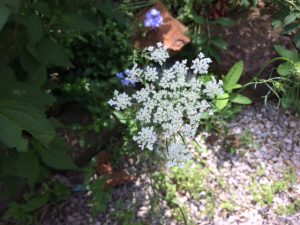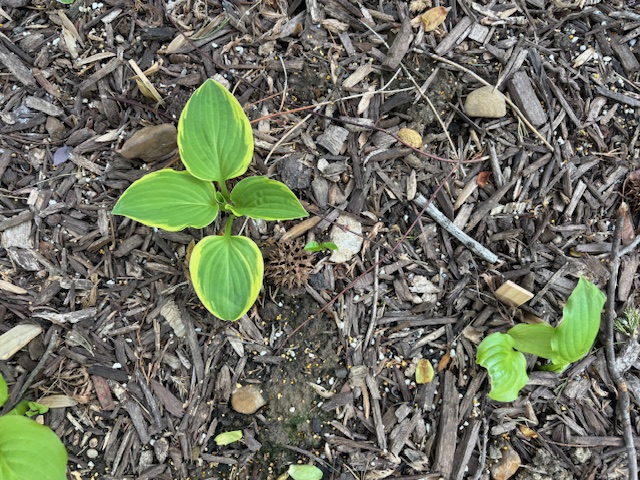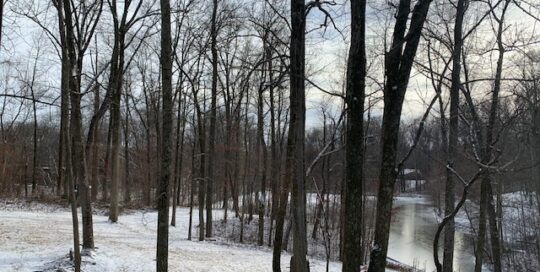Queen Anne’s Lace (Daucus carota)
Views: 1074

When I was much younger, my Dad’s parent’s lived waaay out in the country, at the dead end of a one-lane dirt road. Our three uncles, Dad’s younger brothers, were closer in age to us than to him. In the summer, my brother and I got to visit them for a week or two at time. Bless Grandma for putting up with us! Orange daylilies, black-eyed Susans and Queen Anne’s lace grew abundantly on either side of that dirt road in the hot summer sunshine. We would pick bouquets for Grandma and use the dried flower stalks of the daylilies as “swords”. At that time, I just knew that Queen Anne’s laces was beautiful, but there’s a great deal more to know.
Queen Anne’s Lace
Queen Anne’s lace (Daucus carota) is another import, brought from Europe to the American colonies where it happily naturalized. This herbaceous biennial is also known as “wild carrot”, “bird’s nest”, and “bishop’s lace’. Formed at the end of a stalk, the tiny, white blooms form a flat, dense umbel which really does resemble lace and attracts pollinators, including butterflies.
Queen Anne’s lace or wild carrot, not only has an edible root, high in sugar, but is the ancestress of our modern, edible carrots. There’s a native American wild carrot, too: Daucus pusillus (“rattlesnake weed”) which also has an edible root.
Toxicity
Eating the somewhat toxic foliage can cause slight intoxication to cattle and horses. It is considered a pest in pastures. Although some states list it as “noxious weed”, it does have benefits in addition to being edible. For example, it will boost tomato production when it’s planted nearby and is a host plant for Eastern swallowtail caterpillars.
Take care when handling these plants – the foliage can cause phytophotodermatitis (exposure to a plant which causes the skin to be very sensitive to light, causing bad blisters. Use gloves.
Poisonous Relatives
Unfortunately, this lovely plant has some nasty relatives: Poison hemlock (Conium maculatum) is a very toxic member of the carrot family, which strongly resembles the edible carrot. This is the plant which killed the Greek philosopher, Socrates. I’ve heard a saying, “a bite will kill a man, a plant will kill a horse”. Don’t mess with it and use gloves if you have to handle it.
Fool’s parsley (Aethusa cynapium) and water hemlock (Cicuta species), also known as “cowbane” or “poison parsnip” are two other poisonous look-alikes.
If you’re going to forage for wild edibles, or decide to pull a plant that looks like Queen Anne’s lace from your garden and eat the root, be very sure what plant you have: the edible Queen Anne’s lace, the root will smell like a carrot. If it doesn’t smell like a carrot, put it in the trash, not the compost heap!
Stay Green, Good Friends.
Meet Dona Bergman
Dona Bergman is a founding member, Southwest Indiana Chapter of the Indiana Native Plant & Wildlife Society, and an Advanced Master Gardener.







